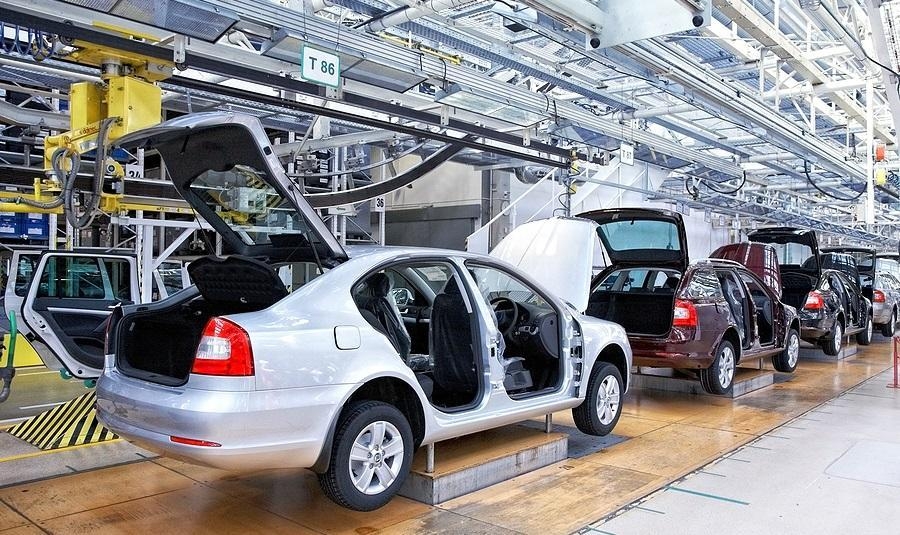Steel Markets

Trump Pushes Less Stringent Emissions Rules for Automotive
Written by Tim Triplett
April 9, 2020
President Trump’s move to greatly ease automotive emissions targets may impact the environment, for better or worse, but likely not steel suppliers to the auto industry.
The Trump administration has finalized its Safer Affordable Fuel-Efficient (SAFE) Vehicles Rule for Model Years 2021-2026, following through on the president’s promise to reverse the Obama-era rules that he considers too stringent and bad for the economy. The new rules must survive a virtually certain court challenge before they can be implemented.
In simple terms, the new rules call for automakers to reduce harmful emissions from their vehicle fleet by 1.5 percent per year for the next six years. That’s a substantial reduction from the 5 percent annual improvement required under Obama’s regulations.
The administration maintains that the auto industry needs a single unified standard with more reasonable emissions goals. This federal rule would preempt any state and local tailpipe and greenhouse gas emissions rules, including the state of California’s. If OEMs can produce cars and trucks that are less expensive, more consumers will buy them, resulting in a net benefit to the environment as older vehicles are removed from the highways, proponents contend. Opponents argue that weakening the Obama-era emissions and fuel economy targets will slow the development of new technologies, such as electric vehicles, and is a major step in the wrong direction for the environment and the fight against global warming.
Automakers have already made substantial progress in designing vehicles that are lighter and more fuel efficient thanks in large part to the huge research effort by the steel industry to develop advanced high-strength steels. Steelmakers claim that replacing conventional parts with AHSS is the most cost-effective way to reduce vehicle mass, while preserving passenger safety. Steel remains locked in a pitched battle with aluminum and other lighter but more expensive materials for a greater share of the automotive materials market.
Which begs the question: Can steelmakers ease their foot off the R&D gas pedal if there’s less urgency for car makers to produce lighter vehicles?
“We welcome the administration’s final revision to the overly aggressive increase of CAFE standards set by the Obama administration. This change in regulatory requirements, however, will not slow down our industry’s efforts to develop new and innovative AHSS grades, as that work is being driven by the needs of our customers in the auto industry, and we don’t see the shift to AHSS slowing down,” said Lisa Harrison, senior vice president of communications for the American Iron and Steel Institute.
The new rules might even prove advantageous to steel if automakers can meet the less stringent emissions targets with AHSS, rather than being forced to consider more expensive alternatives such as aluminum, added John Catterall, vice president of AISI’s automotive program. “A 1.5 percent annual improvement still represents quite an effort for the auto industry. Lightweighting will still be important. They will still need high strength steels.”
Car companies compete in a global market with even stricter environmental rules in some countries. Even if the U.S. lowers the bar, carmakers are likely to stay the course. “They are designing vehicles that get used all around the world, so they are not going to change a lot of their strategies when it comes to construction of the auto bodies,” Catterall said.
AISI collaborates with automotive OEMs through its Auto Steel Partnership and has a close relationship with the industry. “We are still working with automotive to use more AHSS and ultra-high-strength steels in place of milder steels. That trend is not abating,” he added.
The new emissions rules are far from a done deal. The administration has taken steps to withdraw the Clean Air Act waiver that has allowed the state of California to set its own, more restrictive standards. California has vowed to challenge the change in court, and will undoubtedly be joined by other states and environmental groups in a process that likely will last well past the presidential election in November.

Tim Triplett
Read more from Tim TriplettLatest in Steel Markets

CMC looks beyond Arizona micro-mill woes to long-term viability of construction mart
Despite the economic and geopolitical upheaval of the last five years, CMC President and CEO Peter Matt points out that the construction market has been an essential element of the way forward.

US importers face stricter rules under revamped S232 tariffs
“CBP expects full compliance from the trade community for accurate reporting and payment of the additional duties. CBP will take enforcement action on non-compliance," the agency said in a March 7 bulletin.

Steel exports rebound in January
US steel exports recovered to a five-month high in January after having fallen to a two-year low in December. This growth follows four consecutive months of declining exports.

Construction spending drops marginally in January
Construction spending edged down slightly in January, slipping for the first time in four months. The US Census Bureau estimated spending at a seasonally adjusted annual rate of $2,196 billion in January, down 0.2% from December’s downward revised rate. The January figure is 3.3% higher than a year ago. January’s result, despite the slight erosion, […]

HVAC equipment shipments slow in December but strong annually
Shipments of heating and cooling equipment in the US fell to an 11-month low in December, according to the latest data released by the Air-Conditioning, Heating, and Refrigeration Institute (AHRI).
